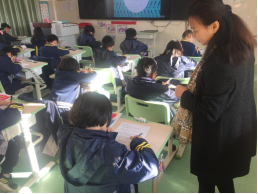2021-04
By Patti
This semester, through learning, I was deeply impressed by project-based learning. The following is my understanding.
Firstly, the essence of learning quality is the flexible transformation of mind. Learners use what they have learned in new situations to solve problems and create new meaning and new knowledge. Project-based learning promotes the development of learners' brain, and the integration of knowledge, ability and attitude lays the foundation for learners' mental freedom. Project-based learning is rooted in the classroom, and at the same time points to the structural reform of the curriculum and the organizational reform of the school, which has far-reaching significance for the transformation of education in the future.

Secondly, the design of project-based learning cannot be separated from the discussion of knowledge view. Project-based learning is a systematic learning design, involving six dimensions. Discipline project learning is not the activity of discipline, but the reconstruction and creation of discipline core knowledge in the context; Interdisciplinary project learning is not a combination of disciplines, but the use of knowledge of two or more disciplines to solve problems, achieve mental transformation of learners and create new results.

Thirdly, project-based learning can be subject-based and transcendental. Under the background of China, as a discipline as the main carrier, focusing on the key concepts and disciplines, to discipline and discipline, discipline and life, discipline and the interpersonal relationship and development, in the form of a project, is one of the feasible way of curriculum reform in China, is one of the countries in school-based curriculum implementation of feasible road.
Finally, what do students need in project-based learning?
1. Thinking: Students are actively engaged in many thinking activities. For example, designing a building, proposing a solution to each challenge, students constantly think and adjust the design plan. At the end the summative assessment asks students to build a self-standing, load-bearing building and explain why it can stand and bear weight. Each student is required to write down the research process of the building in the study diary, which clearly shows their thinking process.
2. To be knowledgeable: Students develop an understanding of the building, develop a sense of history, and learn about the development of specific materials. The research phase gives students an understanding of the factors that need to be considered in building a building, such as geographical conditions and suitability of materials. Students' knowledge of the building is enriched, with an enhanced sense of history and a sense of special materials. Surveys (interviews with speakers, reading books) make them aware of the factors (such as geographical conditions, suitability of materials) that need to be considered for a particular building. Visit an architecture museum to understand the differences between buildings of different ages.
3. Timely Reflection: The whole learning process of the unit requires students to reflect continuously, whether it is independent study, pairs of study, or group study. Summative evaluation also requires students to reflect on their own buildings.

 English
English 中文版
中文版

